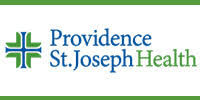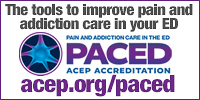Spot early warning signs of unsafe conditions on your floor.
No nurse wants to believe their unit is unsafe. But unsafe doesn’t always look like chaos — sometimes it’s hidden in the routine. Short staffing becomes “normal.” Delays get shrugged off. A near miss gets forgotten. The signs are there — if you know how to see them.
1. Chronic Short Staffing
When “helping out” becomes a daily expectation, patient safety slips first. RNs skip breaks, cluster meds, and rush assessments. That’s not efficiency — it’s exhaustion. Chronic short staffing is the number-one red flag for unsafe practice.
2. Frequent Medication Errors or Near Misses
If your shift report includes “we caught it before it reached the patient” too often, the system is cracking. Errors don’t happen in isolation; they’re warnings that the process is stretched too thin.
3. Alarms Ignored or Silenced
Alarm fatigue is real — and dangerous. When staff tune out constant beeping, the next alarm might be the one that mattered. If you hear silence where vigilance should be, that’s a problem.
4. Lack of Supplies or Broken Equipment
Running out of IV tubing, missing crash cart meds, or sharing glucometers between rooms are safety issues, not inconveniences. Consistent supply gaps signal poor support — and higher risk.
5. Poor Communication Between Shifts
Sloppy handoffs or vague charting create blind spots. If report feels rushed or dismissive, errors multiply. Safe units share information clearly, even under pressure.
6. Intimidation or Fear of Speaking Up
If nurses feel they can’t question an order, report a mistake, or raise a safety concern without backlash, safety culture doesn’t exist. Psychological safety is the foundation of physical safety.
7. Overreliance on New Grads
Every nurse starts somewhere, but a unit top-heavy with novices and few mentors is vulnerable. Experience balance matters. Support your new grads — and advocate when orientation ends too soon.
8. Poor Infection Control Compliance
Shortcuts on PPE, skipped hand hygiene, or broken isolation protocols are warning lights. Complacency spreads faster than bacteria.
9. High Turnover and Burnout
If nurses are constantly quitting or calling out, something deeper is wrong. Burnout isn’t an individual failure — it’s a system screaming for change.
10. Leadership That Doesn’t Listen
Unsafe units often share one trait: leadership that minimizes nurse feedback. When concerns get brushed aside or labeled as “negativity,” it’s time to escalate — or walk.
What You Can Do
Document. Report. Support each other. Unsafe conditions thrive in silence. Use your chain of command, involve your union or safety officer, and protect your license first.
Final Thought
A safe unit isn’t just about staffing ratios or clean audits — it’s about trust. When nurses feel heard, supported, and equipped, patients live longer and outcomes improve. If your gut says something’s wrong, it probably is. Speak up. Safety starts with you.
Calendar




